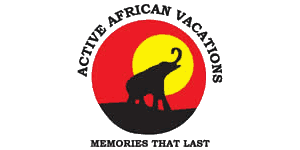Semuliki National Park: bird watching and hot spring experience
Semuliki National park, formerly known as Toro Game Reserve, is indeed one of Uganda’s oldest wildlife reserves, located in the western region within Kabarole district. Positioned northeast of the Bundibugyo road, it extends to Ntoroko on the southern shores of Lake Albert. Spanning an area of 542 square kilometers, the reserve lies between the majestic Rwenzori Mountains and the Kijura Escarpment of Lake Albert, bestowing upon it a breathtaking Rift Valley setting.
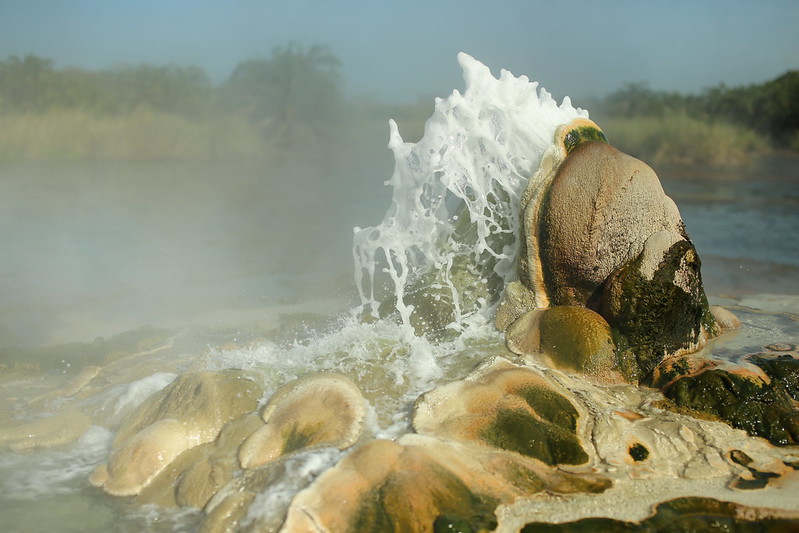 Semuliki National Park is renowned for its abundant wildlife, particularly its large population of Uganda kobs and its diverse bird species. The park offers a rich array of attractions for tourists, making it a prime destination for wildlife enthusiasts.
Semuliki National Park is renowned for its abundant wildlife, particularly its large population of Uganda kobs and its diverse bird species. The park offers a rich array of attractions for tourists, making it a prime destination for wildlife enthusiasts.
Among its wildlife inhabitants, Semuliki National Park boasts approximately 53 species of mammals, including antelopes, buffaloes, Uganda kobs, waterbucks, leopards, lions, and forest elephants. Additionally, the park is home to various primate species such as black-and-white colobus monkeys, olive baboons, red-tailed monkeys, and vervet monkeys, providing visitors with ample opportunities for primate viewing and photography.
One of the highlights of Semuliki National Park is its status as a birding paradise, with approximately 420 bird species recorded within its lowland tropical forests. Birdwatchers can delight in sightings of rare and endemic species such as the blue swallow, white-throated blue swallow, swamp palm, ground thrush, and red-eyed puffback. Notably, the park is also home to sought-after species like the elusive shoebill, Abyssinian ground hornbill, and various sunbirds, adding to the allure of birdwatching in this picturesque setting.
With its diverse wildlife, lush landscapes, and exceptional birdlife, Semuliki National Park offers visitors an unforgettable safari experience in the heart of Uganda’s wilderness.
Semuliki National Park is indeed an extension of the vast Ituri Forest, contributing to its rich biodiversity and making it one of the most diverse areas in Africa for flora and fauna. The park encompasses a variety of habitats, including savannah grasslands and lowland tropical forests, the latter being one of the ancient and biologically diverse forests in the region.
Within Semuliki National Park, there are approximately 336 tree species, including three endangered species and 24 restricted tree species such as Euphorbia and Chrysophyllum begui. This abundance of plant life supports a thriving ecosystem and provides habitat for a wide range of wildlife.
One of the natural wonders of Semuliki National Park is the presence of the Semliki River and its ever-bubbling hot springs, which are popular attractions for visitors seeking unique natural phenomena.
The park’s location within the Semliki Valley, nestled on the remote western side of the Rwenzori Mountains, is not only significant for its natural beauty but also for its cultural heritage. Surrounding the park are four distinct tribes: the Bwamba farmers at the base of the Rwenzori Mountains, the Bakonjo cultivators on the mountain slopes, the Batuku cattle keepers, and the Batwa pygmies from the Ituri Forest. This cultural diversity offers visitors the opportunity to engage in cultural walks and experience the traditional way of life, including thatched huts shaded by African oil palms.
Originally established in 1926 as the Toro Game Reserve to protect Uganda kobs, Semuliki National Reserve underwent a name change to Semuliki National Park. Since 2005, the area has been designated as a lion conservation unit, highlighting its importance for the conservation of this iconic African predator.
HISTORY OF SEMLIKI NATIONAL PARK.
The history of Semuliki National Park is deeply intertwined with Uganda’s conservation efforts and the region’s rich biodiversity. Here’s an overview of its historical development:
Early Settlement and Exploration:
The area around Semuliki National Park has a long history of human habitation, with indigenous tribes such as the Bwamba, Bakonjo, Batuku, and Batwa residing in the region for centuries. Early European explorers, including Henry Morton Stanley and Sir Samuel Baker, traversed the area during their expeditions in the late 19th century.
Establishment as a Game Reserve:
Semuliki National Park traces its origins back to 1926 when it was initially established as the Toro Game Reserve by the British colonial administration. The primary objective was to protect the abundant wildlife in the area, particularly the Uganda kob, a species of antelope.
Renaming and Development:
Over the years, the reserve underwent several changes, including a name change to Semliki National Reserve. During this period, efforts were made to enhance its infrastructure and facilities to accommodate visitors and promote tourism.
Upgrade to National Park:
In 1993, Semliki National Reserve was upgraded to Semuliki National Park, reflecting its expanded conservation status and the recognition of its unique ecological significance. This upgrade brought increased attention to the park and further efforts to conserve its biodiversity.
Conservation Efforts:
Since its designation as a national park, Semuliki has been the focus of various conservation initiatives aimed at preserving its diverse ecosystems and protecting endangered species. These efforts include habitat restoration, anti-poaching patrols, and community engagement programs.
Recognition as a Lion Conservation Unit: In 2005, Semuliki National Park was designated as a lion conservation unit, highlighting its importance as a stronghold for the conservation of African lions in Uganda.
Tourism and Research:
Semuliki National Park has also emerged as a popular destination for ecotourism and scientific research. Visitors come to explore its diverse habitats, observe wildlife, and experience the unique culture of the surrounding communities.
Overall, the history of Semuliki National Park reflects a journey of conservation, protection, and appreciation for the natural heritage of Uganda’s western region. From its humble beginnings as a game reserve to its current status as a national park, Semuliki continues to play a vital role in safeguarding the biodiversity of this ecologically significant area.
ACTIVITIES IN SEMLIKI NATIONAL PARK.
Semuliki National Park offers a range of activities for visitors to enjoy, each providing unique opportunities to explore its diverse ecosystems, wildlife, and cultural heritage. Here are some of the activities you can experience in Semuliki National Park:
Game Drives:
Embark on thrilling game drives through the park’s Savannah grasslands and forested areas in search of diverse wildlife such as Ugandan kobs, waterbucks, buffalo, elephants, and various primate species. Experienced guides lead these excursions, offering insights into the park’s ecology and animal behavior.
Bird Watching:
With over 420 bird species recorded within the park, Semuliki is a paradise for birdwatchers. Guided birding walks or drives allow you to spot a wide variety of avian species, including the rare shoebill stork, African grey parrot, Abyssinian ground hornbill, and many others.
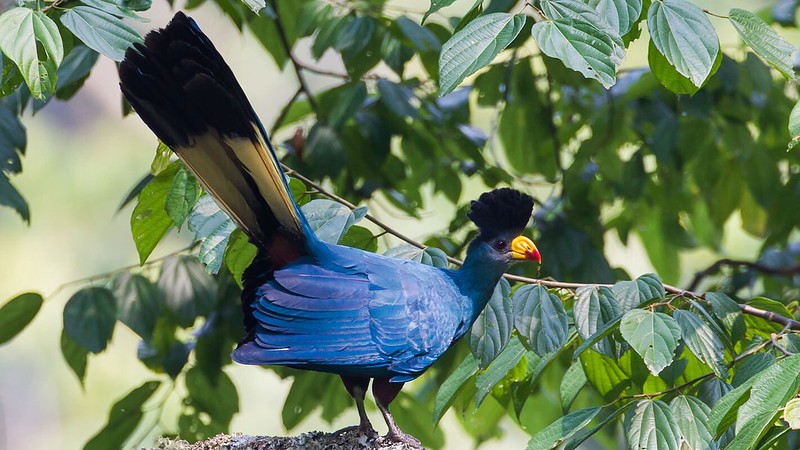 Cultural Encounters:
Cultural Encounters:
Immerse yourself in the rich cultural heritage of the surrounding communities by participating in cultural encounters. Visit local villages, interact with residents, and learn about traditional practices, crafts, and lifestyles. Cultural walks offer insights into the lives of the Bwamba, Bakonjo, Batuku, and Batwa ethnic groups.
Nature Walks and Hiking:
Explore the park’s diverse landscapes and ecosystems on guided nature walks and hiking trails. Trek through lowland tropical forests, along the banks of the Semliki River, and to scenic viewpoints offering panoramic vistas of the surrounding terrain. Trails vary in difficulty, catering to both leisurely strolls and more challenging hikes.
Hot Springs Visit:
Do not miss the opportunity to visit the park’s famous hot springs, where boiling water bubbles to the surface from deep within the earth. Enjoy a guided tour to witness this natural phenomenon up close, and perhaps even take a soothing dip in the mineral-rich waters.
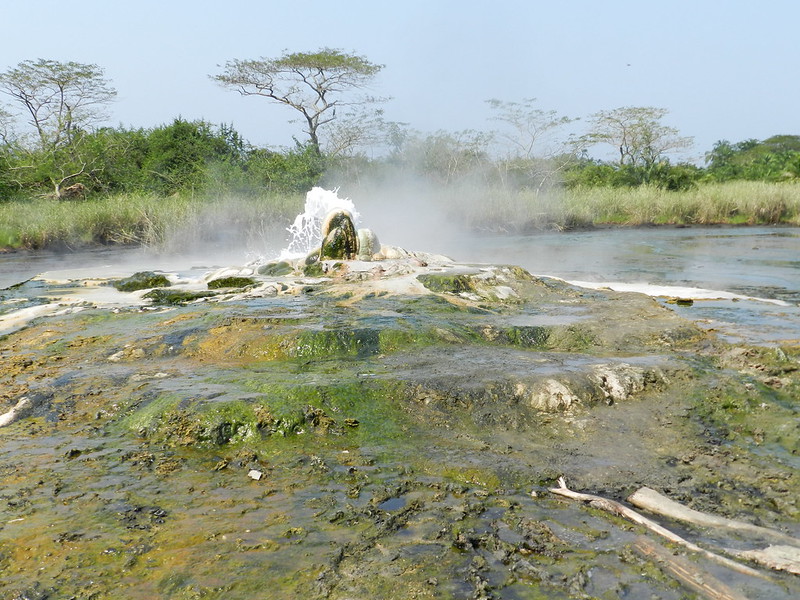 Boat Trips:
Boat Trips:
Experience Semuliki from a different perspective with a boat trip along the Semliki River or on Lake Albert. These excursions provide opportunities for wildlife viewing, birdwatching, and soaking in the scenic beauty of the surrounding landscapes.
Night Game Drives:
For a chance to encounter nocturnal wildlife such as leopards, bushbabies, and owls, consider joining a night game drive led by experienced rangers. Equipped with spotlights, you’ll explore the park after dark and witness the fascinating behavior of its nocturnal inhabitants.
These activities offer diverse experiences for visitors to Semuliki National Park, allowing them to connect with nature, wildlife, and local culture while exploring this unique corner of Uganda.
ATTRACTIONS IN SEMLIKI NATIONAL PARK.
Semuliki National Park is renowned for its stunning natural beauty, diverse ecosystems, and rich biodiversity, offering visitors a plethora of attractions to explore. Here are some of the top attractions in Semuliki National Park:
Sempaya Hot Springs:
These natural hot springs are one of the park’s most famous attractions. The Sempaya Hot Springs consist of two main springs, the “female” spring known as Nyasimbi, and the “male” spring known as Bitente. Visitors can witness the bubbling hot water and enjoy the therapeutic effects of the mineral-rich springs.
Semuliki River:
The Semuliki River meanders through the park, providing vital water sources for wildlife and creating picturesque landscapes. Boat trips along the river offer opportunities for wildlife viewing and birdwatching while admiring the scenic beauty of the surrounding forests.
Wildlife Viewing:
Semuliki National Park is home to a diverse array of wildlife, including mammals such as Uganda kobs, buffaloes, forest elephants, chimpanzees, and various monkey species. Game drives and guided walks provide excellent opportunities to observe these animals in their natural habitat.
Bird Watching:
With over 420 bird species recorded within the park, Semuliki is a paradise for birdwatchers. Birding enthusiasts can spot a wide variety of avian species, including the rare shoebill stork, Abyssinian ground hornbill, African grey parrot, and many others.
Cultural Encounters:
Explore the rich cultural heritage of the surrounding communities through cultural encounters. Visit local villages, interact with residents, and learn about traditional practices, crafts, and lifestyles. Cultural walks offer insights into the lives of the Bwamba, Bakonjo, Batuku, and Batwa ethnic groups.
Scenic Landscapes:
Semuliki National Park boasts breathtaking landscapes, including lush tropical forests, savannah grasslands, and the dramatic Rwenzori Mountains. Scenic viewpoints offer panoramic vistas of the surrounding terrain, providing opportunities for photography and relaxation amidst nature.
Nature Walks and Hiking:
Guided nature walks and hiking trails allow visitors to explore the park’s diverse ecosystems up close. Trek through ancient forests, along the banks of the Semliki River, and to scenic viewpoints, immersing yourself in the beauty of the natural surroundings.
These attractions make Semuliki National Park a captivating destination for nature lovers, wildlife enthusiasts, and adventurers seeking to experience the wonders of Uganda’s wilderness.
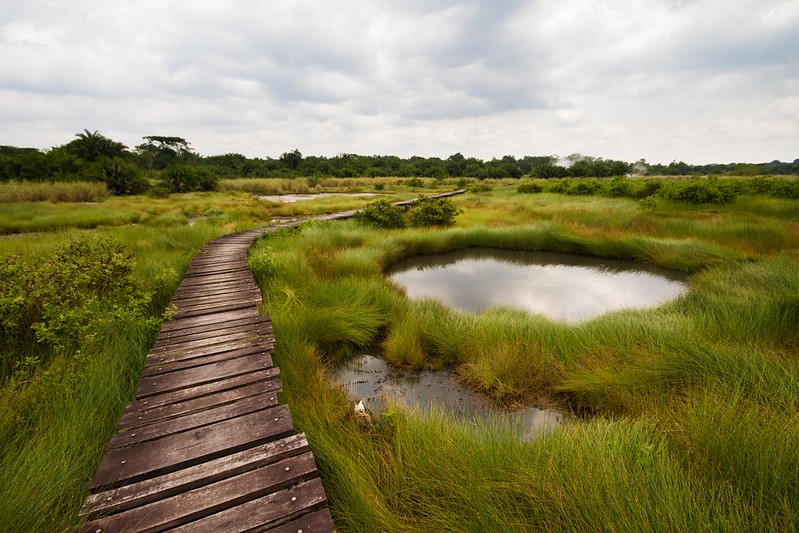 GETTING TO SEMLIKI NATIONAL PARK.
GETTING TO SEMLIKI NATIONAL PARK.
Getting to Semuliki National Park typically involves traveling to the nearby town of Fort Portal, which serves as a gateway to the park. Here are the main transportation options for reaching Semuliki National Park:
By Air:
The nearest major airport to Semuliki National Park is Entebbe International Airport (EBB), located near the capital city of Kampala. From Entebbe, you can either take a domestic flight to Kasese Airport or hire a private charter flight to Semliki Airstrip, which is closer to the park. Once you arrive, you can arrange for ground transportation to Semuliki National Park.
By Road:
Most visitors travel to Semuliki National Park by road, either by self-driving or hiring a vehicle with a driver. The journey from Kampala to Fort Portal takes approximately 4-5 hours by car, depending on traffic and road conditions. From Fort Portal, you can continue your journey to Semuliki National Park via Bundibugyo Road, which passes through the scenic countryside. The distance from Fort Portal to the park entrance is around 55 kilometers, and the drive takes approximately 1.5-2 hours.
Public Transportation:
Public buses and mini buses (known as matatus) operate between Kampala and Fort Portal, providing an affordable option for travelers. Once in Fort Portal, you can hire a taxi or boda-boda (motorcycle taxi) to reach Semuliki National Park. Keep in mind that public transportation may be less frequent and less comfortable compared to private transportation options.
Organized Tours:
Many tour operators offer organized tours to Semuliki National Park, which typically include transportation, accommodation, guided activities, and park fees. Joining a tour can be a convenient way to explore the park while benefiting from the expertise of experienced guides.
Regardless of the transportation option you choose, it’s advisable to plan your journey in advance and check road conditions, especially during the rainy season when some roads may become impassable. Additionally, ensure you have all necessary permits and documentation for your visit to Semuliki National Park.
WHEN TO GO TO SEMLIKI NATIONAL PARK.
The best time to visit Semuliki National Park largely depends on your preferences and interests, as well as the activities you plan to undertake. However, here are some general considerations to help you decide when to go:
Dry Season (June to August, December to February):
The dry season, particularly the months of June to August and December to February, is generally considered the best time to visit Semuliki National Park.
During the dry season, the weather is typically sunny and rain is less frequent, making it ideal for activities such as game drives, birdwatching, and hiking.
Wildlife tends to gather around water sources, providing excellent opportunities for wildlife viewing.
Wet Season (March to May, September to November):
The wet season in Semuliki National Park occurs from March to May and from September to November.
Although rainfall is more frequent during this time, the park’s lush vegetation becomes even more vibrant, creating beautiful landscapes for photography.
The wet season is also a good time for birdwatching, as migratory bird species are often present in the park.
However, road conditions may become challenging due to muddy and flooded tracks, and some areas of the park may be inaccessible.
Birding Season
If birdwatching is your primary interest, consider visiting Semuliki National Park during the birding season, which typically spans from November to April.
During this time, migratory bird species from Europe and northern Africa are present in the park, adding to the diversity of resident bird species.
Cultural Events:
Semuliki National Park is also known for its cultural encounters with the surrounding communities, such as the Bwamba, Bakonjo, Batuku, and Batwa ethnic groups.
Check local calendars for cultural events and festivals that may coincide with your visit, providing opportunities to experience traditional dances, ceremonies, and celebrations.
Ultimately, the best time to visit Semuliki National Park depends on your preferences for weather, wildlife viewing, and specific activities. Be sure to research and plan your trip accordingly, taking into account both climatic conditions and seasonal highlights.
ACCOMMODATION IN SEMLIKI NATIONAL PARK
While visiting Semuliki National Park, there are several accommodation options to suit different preferences and budgets. Here are some recommended places to stay within or near the park:
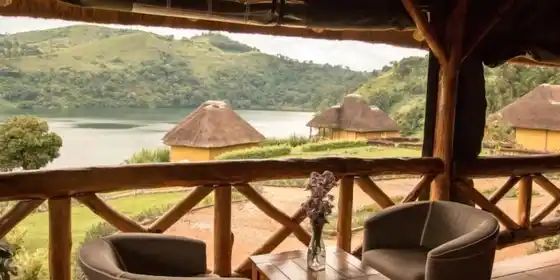 Semuliki Safari Lodge:
Semuliki Safari Lodge:
This luxury lodge offers spacious cottages and tents nestled within the forest, providing an intimate and immersive experience with nature. The lodge features elegant accommodation, gourmet dining, and panoramic views of the surrounding landscapes.
Ntoroko Game Lodge:
Situated on the shores of Lake Albert, Ntoroko Game Lodge offers comfortable accommodation with stunning views of the lake and surrounding savannah. The lodge provides a range of amenities, including a restaurant, bar, and swimming pool, as well as guided activities such as game drives and boat safaris.
UWA Bandas:
Managed by the Uganda Wildlife Authority (UWA), the bandas offer basic yet affordable accommodation within Semuliki National Park. These simple cottages are ideal for budget-conscious travelers seeking a rustic experience close to nature.
Community Campsites:
Some local communities near Semuliki National Park offer campsites for visitors interested in immersive cultural experiences. These campsites often provide basic facilities and opportunities to interact with residents, learn about local traditions, and participate in community activities.
Fort Portal:
If you prefer to stay in a larger town with more accommodation options, Fort Portal serves as a convenient base for exploring Semuliki National Park. The town offers a variety of hotels, guesthouses, and lodges to suit different budgets and preferences.
It’s advisable to book your accommodation in advance, especially during peak tourist seasons, to ensure availability and secure your preferred lodging option. Additionally, consider factors such as proximity to the park entrance, amenities offered, and any special packages or activities available at each accommodation.
